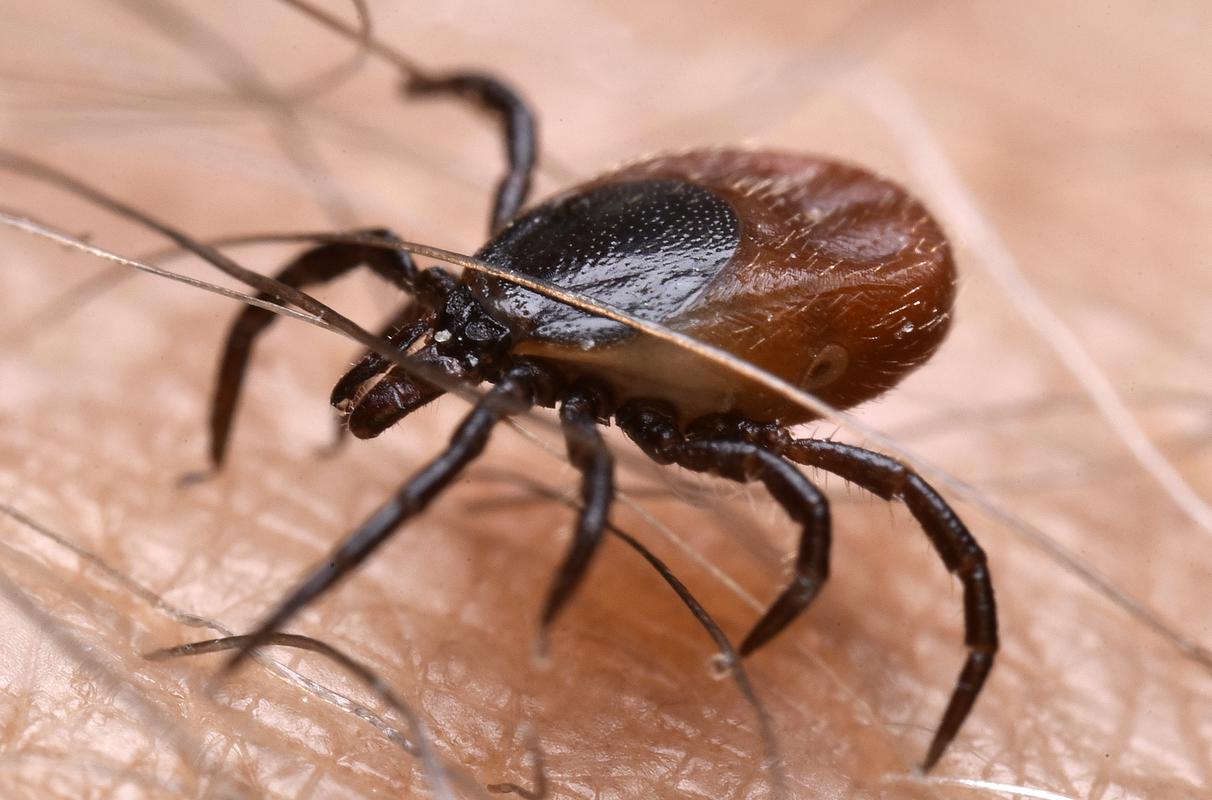
The warmer weather has already lured many people into nature, where they can also encounter a small animal whose bite can have fatal consequences – the tick. This year, the NIJZ has already received the first cases of tick-borne infections.

Ticks are found mainly in the forest undergrowth, in the thickets of moist mixed forests, in the grass and in the garden, especially up to an altitude of 600 meters, there can be many of them. They hibernate in leaves, in the bark of tree trunks and surface soil layers, and as soon as the soil temperature rises, they become active. A mild winter and a wet spring accelerate the activity of ticks, and the risk of infection sometimes lasts from February to November, the NIJZ explains.
This year, NIJZ has already received one report of infection with tick-borne meningoencephalitis (CME) and 128 reports of infection with Lyme disease, they explained to STA. Last year, according to preliminary data, there were 126 cases of KME (62 the year before) and 3,994 cases of borreliosis (2,923).
A tick bite does not cause pain in humans, as tick saliva has an anesthetic effect, so bites often go unnoticed, especially in children. If a tick is infected with the tick-borne meningoencephalitis virus or the causative agent of Lyme disease, it can transmit the causative agent of the disease to humans while sucking blood, the National Institute of Public Health explains. After the bite of an infected tick, the host is not always infected, but the infection can also take place without any signs of disease. Those people who have been infected with the KME virus in the past are protected from the disease.
CME is a viral disease of the central nervous system that can leave permanent consequences such as headache, reduced work ability and ability to concentrate, even paralysis, approximately one or two percent of adults can even die from it. Among the reported cases of CME, 119 people were treated in hospitals last year, and in 2021 there were 48 cases. Last year, 142 patients were hospitalized due to Lyme disease, compared to 96 the year before, the NIJZ informed STA.
Vaccination effectively protects against CME
We can effectively protect ourselves from CME by vaccination. Although vaccination is mandatory in Slovenia only for those who are exposed to the infection at work, such as foresters and hunters, NIJZ recommends it for everyone over one year of age who moves or lives in an area where KME is endemic. Slovenia is one of the endemic areas and ranks among the top European countries in terms of the frequency of KME. Ticks infected with the causative agent of tick-borne meningoencephalitis are most abundant in Gorenje, Carinthia and the Ljubljana region, while ticks infected with Borrelia are widespread throughout Slovenia.
It is recommended to vaccinate with the first two doses in the winter months with an interval of one month, in order to establish protection against the disease even before the ticks are active. The third dose follows in five to 12 or nine to 12 months, which depends on the type of vaccine, then booster doses are needed, the first in three, and later every five years.
In Slovenia, since 2019, vaccination against KME has been introduced into the vaccination program for children who turn three years old in the current year and adults who turn 49 years old. In 2021, 115,427 vaccinations against CME were carried out, according to NIJZ data, 29,490 people received the first dose. This year, between 121,000 and 156,000 doses of the CMV vaccine are available. Vaccination against KME has already started this year.
In addition to vaccination, protection with clothing and repellents is also important
The most important measures to reduce the risk of disease occurrence are the prevention of tick bites and the rapid removal of already sucked ticks. NIJZ advises that when going out into nature, we should wear light-colored clothes that cover as much of the body as possible, that we use means that repel ticks, and that when we return from nature, we should thoroughly examine ourselves and remove any ticks that have been sucked in as soon as possible.
The bite site should be observed for several weeks. If the redness characteristic of borreliosis appears, an immediate visit to the doctor is necessary. Timely treatment with appropriate antibiotics is important to prevent further development of the disease.
Source: Rtvslo